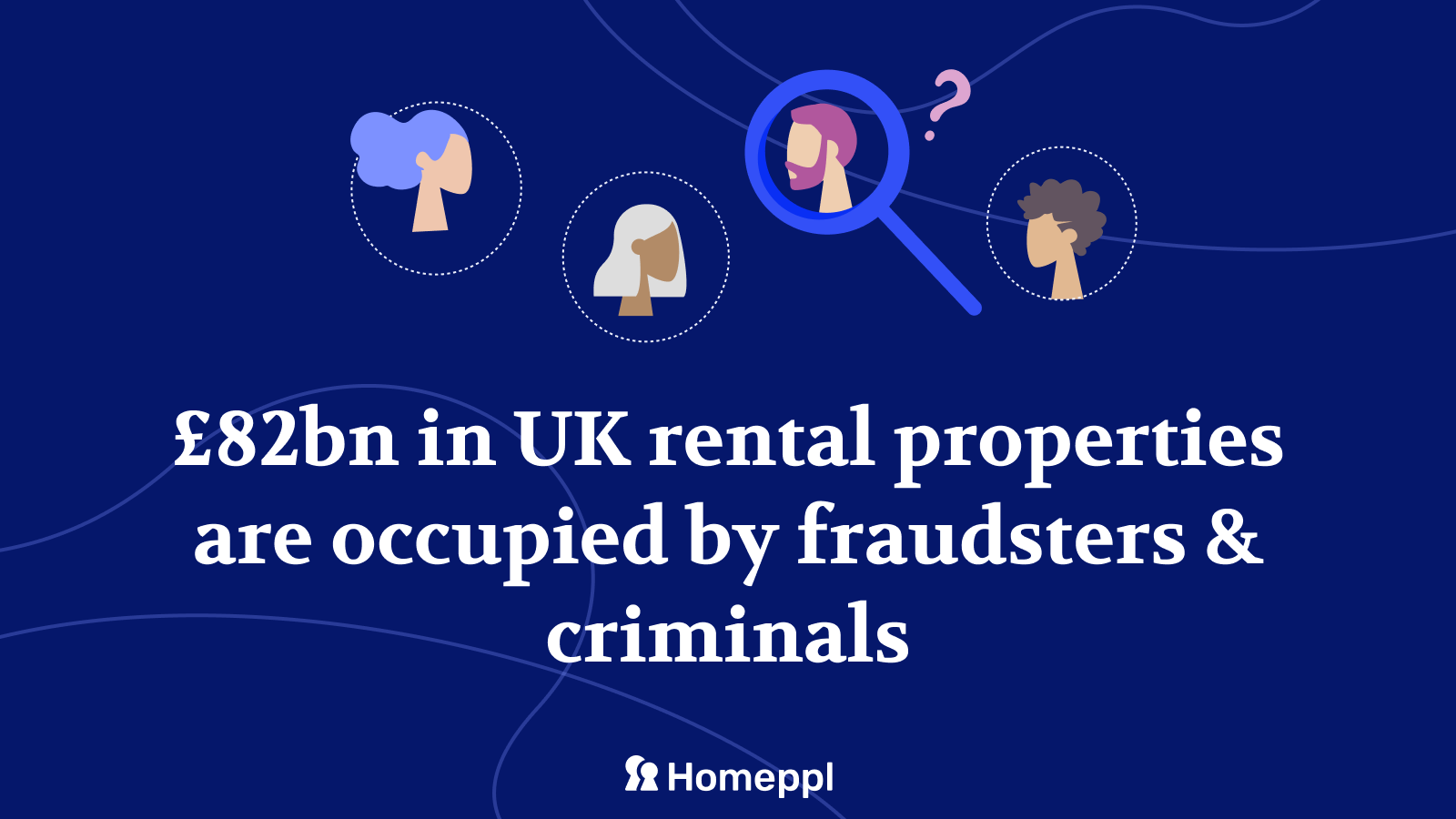Table of contents:
A rise in fraudulent attacks on loan companies
What is loan or lending fraud?
What are the different types of lending fraud?
Fraud in the rental industry
How To prevent loan fraud from Happening
The role of technology
Loan fraud trends for 2023
Fraudulent attacks remain one of the largest threats faced by businesses today. This is of particular concern for loan companies and banks who already have to mitigate the inherent risks of lending money to customers who may be unable to pay the debt back. With a rise in lending fraud being thrown into the mix, lenders are faced with a series of challenges when it comes to ensuring that the correct validation methods are employed for prospective borrowers.
As lending fraud continues to increase, small and medium businesses are being identified as the most vulnerable targets. Businesses being subjected to loan fraud are at risk of revenue losses, and reputation damage, which ultimately impedes an organisation's future growth.
Effective loan fraud prevention is essential for protecting a business' financial stability, maintaining compliance with regulations, safeguarding a business's reputation and guaranteeing continuity in operations. Accordingly, it’s essential that adequate safeguards are implemented by businesses to catch out any red flags and ultimately prevent them from becoming victims of.
This article takes a closer look at fraud risk management in the consumer loan space and dissects some of the most common methods employed by fraudsters. How can existing fraud prevention methods can be improved upon with the aid of new technologies?

What is loan or lending fraud?
Loan fraud or lending fraud is a type of financial misrepresentation that occurs when an individual intentionally conceals or manipulates information in order to deceive a lender or financial institution to either obtain a loan or credit under false pretences, or obtain a more significant line of credit.
Loan fraud is illegal, to state the obvious. It can result in serious consequences for both the borrower and the lender. Fraudulent borrowers may face legal consequences such as fines or imprisonment, and may even be required to repay the loan with added interest and penalties.
As with all types of fraud, the lender will most likely suffer financial losses, damage to their reputation, or even legal liability if they are found to have engaged in fraudulent lending practices. It is vital for lenders and borrowers alike to be vigilant in taking the correct steps to ensure they protect themselves against becoming victims of poor due diligence.
What are the different types of loan fraud?
There are several types of deceptions that individuals or organisations may commit to secure a particular consumer or business loan. Below are a few examples of loan fraud that are spiking, largely as a result of a poor economic downturn:
First-party loan fraud
Also known as personal loan fraud, first-party loan fraud is an umbrella term for when an individual directly provides false information on their own loan application in order to obtain the credit they may not otherwise qualify for. This type of loan fraud can encompass income fraud, employment fraud, asset fraud, vehicle application fraud or loan application fraud, all of which typically involve the use of falsified documentation to support their loan application.
Here's an example of an applicant faking their address on a bank statement to hide bad credit. This fraudster was caught out in a matter of seconds by our document checker tool, Fraud Finder.
Income and employment fraud
Income fraud, and/or employment fraud, involves providing false or inflated information regarding one's income, such as over-exaggerating one’s salary, providing fake tax returns or providing fabricated employment verification documents such as fake bank statements or payslips.
See below the example of easy it is for an applicant to modify a payslip, and how technology can help foil their efforts:
Asset fraud
Asset fraud occurs when an individual or organisation overstates the value of their collateral in order to secure a loan.
Loan application fraud
lastly, loan application fraud involves providing incomplete or entirely false information that misrepresents one’s credit history or failing to disclose other debts and outstanding loans, making themselves appear more creditworthy than they actually are to increase their chances of being approved for a loan.
According to a recent CIFAS report, ‘1 in 13 Brits admit to committing at least one form of first-party fraud in the last year, with those 16-34 the most likely to do so’.

Second-party loan fraud
This type of loan fraud occurs when an individual provides their personal information to another person to commit fraud. The fraudster poses as a legitimate borrower and provides all the necessary information and documentation, including identification, income documents, and additional financial documentation, in order to qualify for a loan. This type of loan fraud can occur with or without the knowledge and consent of the individual whose information is being used, and in some cases, the person may be unaware that their information is being used by a fraudster and will be left to cope with the debt left behind while the fraudester vanishes.
Second-party loan fraud can have severe consequences for the real borrower, including damage to their credit score and legal consequences if they are unable to repay the loan. This type of loan fraud can be particularly difficult to identify as there are often no signs of illegality due to the authenticity of the information being provided.
Third-party loan fraud or identity fraud
Identity loan fraud is a type of financial fraud where a fraudster uses someone else’s identity to obtain a loan or credit without their consent. In these cases, the fraudster typically uses fake or stolen documents to obtain a loan that they have no intention of paying back.
In order to successfully manipulate lenders out of large sums of money, fraudsters use synthetic identities created by combining stolen and fake information which they use to borrow small amounts of money and pay it back to legitimise the false persona and in turn boost their fake credit score, making them appear eligible for larger loans.
Lending fraud in the rental industry
Loan fraud can also occur in the rental industry through rental application fraud, security deposit fraud, lease fraud, and subletting fraud.

In rental application fraud, a prospective tenant provides false information on their rental application such as inflating their income or employment status, providing falsified documentation to support these claims, or providing a fake reference for employment verification. This deceives the agent or landlord into believing the individual meets the affordability criteria for a property, when in fact they may not have the funds or regular income to pay for the property rent.
Advanced tenant referencing technology and techniques are now essential for letting agencies as the rental market (especially in the UK) has spiralled out of control, demand and cost wise.
How to prevent loan fraud from happening
Numerous factors have contributed to the growth in application fraud and it can be difficult for businesses to maintain adequate fraud measures whilst simultaneously ensuring that they continue to provide a frictionless customer experience.
A cumbersome validation process can interfere with the customer journey, causing hassle, delays or outright abandonment of the process. The pressure on businesses to maintain a seamless experience for new customers means that oftentimes their KYC verification checks are kept simple, often times leaving room for fraudsters to take advantage of the security gaps. Further, the rise in the availability of personal identity information stolen in large-scale data breaches has contributed to a rise in synthetic identity theft.
With so many factors to consider, what can businesses do to reduce loan fraud risks without compromising their customer experience?
The role of technology: Fraud Finder
The rise in fraud-aiding technologies has made it increasingly difficult to identify fraudsters and in turn, created a need for businesses to implement an extra layer of security for elevated fraud prevention. Fraud detection solutions offer just that, not only does it enable businesses’ to catch out the fraudsters that slip through the cracks of human error but additionally, by automating analysis it allows for the onboarding process to remain speedy and efficient.
Homeppl’s document analysis tool, Fraud Finder is a unique risk qualification tool which extensively screens every single user by compiling a multitude of widely employed fraud prevention solutions into one quick, and easy-to-use gadget without causing friction to genuine customers.
Fraud Finder is a key part of Homeppl’s overall risk qualification engine. This engine works on a combination of document analysis, behavioural analysis, open banking algorithms and data enrichment.
A few integral methods employed by fraud technology that Homeppl’s technology utilises as part of a full risk qualification assessment:
IP analysis
Geolocation can be derived from IP analysis in order to understand a prospective customer's physical location, further it can uncover what type of network they are using and flag any potential history associated with that IP. Further, IP analysis can be utilised for session tracking of customers' digital application process.
Digital footprint analysis
This method involves analysis of an individual's online presence by following the trail left behind by their online activity, helping determine the applicant's authenticity. Typically, identity fraudsters go through application processes using newly made identities that seldom have an online presence, digital footprint analysis can red flag this for further investigation. It can also highlight any previous suspicious activity.
Homeppl once aided the police via an investigation into domestic terrorism as our digital footprint test uncovered ties between a rental applicant and a known Turkish terrorist cell.

Email analysis
Similarly to digital footprint analysis, email tracking identifies the age and activity of a prospective customer's nominated email address, analysis of which can flag whether the email address was newly created, and determines whether or not it can be linked to an online presence.
Data enrichment & behavioural Analysis
Financial data enrichment allows us to gain an in-depth understanding of each applicant's financial behaviour and affordability for unparalleled risk insights based on facts and data. Financial analysis derived from this tool instantly flags anomalies making it impossible for fraudsters to fabricate financial information and get away with it.
Transactional data
Turn any bank statement into raw financial data which allows for easy grouping, comparison and bank transactional analysis.
Meta data extraction & analysis
Fraud finder strips down documents provided by applicants to determine the software, or any third-party tools used to create supporting documentation, and in turn cross-verifies this data to determine document authenticity.
Font Analysis
Another tool for identifying document falsification, Fraud Finders' font analysis instantly flags irregularities in font and generates document comparisons illuminating modifications
.
For example, see how we can easily identify the anomalies in font on this bank statement:

If left to a human review, fatigue or lack of concentration may have kicked in and the modifications to the balances made in yellow may have gone unnoticed. As you can see, this change makes it appear that this applicant has £8,000 in the bank rather than £400, putting the lender at serious financial risk.
Image X-Ray Analysis
X-ray image analysis tracks the version history of any document, highlighting unexpected imperfections in the document's structure.
Loan fraud trends for 2023
The rise in BNPL and digital wallets
According to research conducted by Worldpay, the range of credit services available to consumers is expanding due to changing consumer habits. By 2023, digital wallets and BNPL products are expected to become the majority share of global online payments, surpassing traditional cash and credit cards.

The impact of incentivised shopping on consumer behaviour, particularly on younger people, is not yet fully understood. Some consumers may quickly find themselves in debt and resort to alternative credit sources to meet repayments. A study by OpenMoney revealed that 43% of respondents used BNPL to pay for services they could not afford otherwise.
The increase in synthetic identities, which makes it difficult for providers to distinguish between fact and fiction, poses a risk to the credit market, particularly BNPL loans that require relatively simple due diligence checks. Credit institutions may expect to see increasing rates of first-party fraud among applicants who seek to gain access to BNPL products and other financial services with a low intention of ever repaying their debts, let alone any interest rate assigned to their product.
Deepfakes
As banks take on more responsibility, some consumers may provide their information to others to receive a refund for a non-existent scam, while others may participate in money-mule schemes and grant launderers access to their bank accounts.
What are deepfakes?
Deepfakes are synthetic audio or video representations of a real person that are being used more frequently in scams. They can be thought of as a blend of animation and photorealistic art.
Advancements in technology will make deepfakes more convincing and scalable, leading to a rise in fraud cases involving this technology. Over the next year, generative artificial intelligence technologies will enable fraudsters to mimic a person's conversational and typing patterns, making social engineering attacks even more effective. By impersonating a person's speech, fraudsters can trick victims into falling for scams that involve defrauding banks and lenders.
Other AI-based fraud scams and tactics to look out for
The rise of emerging AI models presents both opportunities and risks for fraudsters. They can use these models to:
Generate more sophisticated phishing messages that appear more convincing to consumers
Create fake websites with chatbots that imitate legitimate ones to obtain sensitive information
Attempt AI voice generation or cloning to bypass biometric checks
Generate AI-generated photos to lend credibility to synthetic identities.
When lenders assess the viability and risk of an applicant, especially for an SMB loan, a website check is essential. Websites are the digital window shop… and can be dressed up as such. Homeppl’s full check examines the architecture of the site and validates essential information such as the date of its inception, its UX, and stress tests emails and domains related to that website to combat these AI fraud attacks.
In a nutshell
With the cost of living crisis showing no signs of regressing this year, and technology afforded to fraudsters becoming more available, it’s important all harbingers of financial products erect the most accurate safeguards.
Document analysis and risk qualification technology is the first line of defence against first party loan fraud in 2023. Book a demo to see and trial the technology that might save your company time and money today. There really is not a moment to waste.



